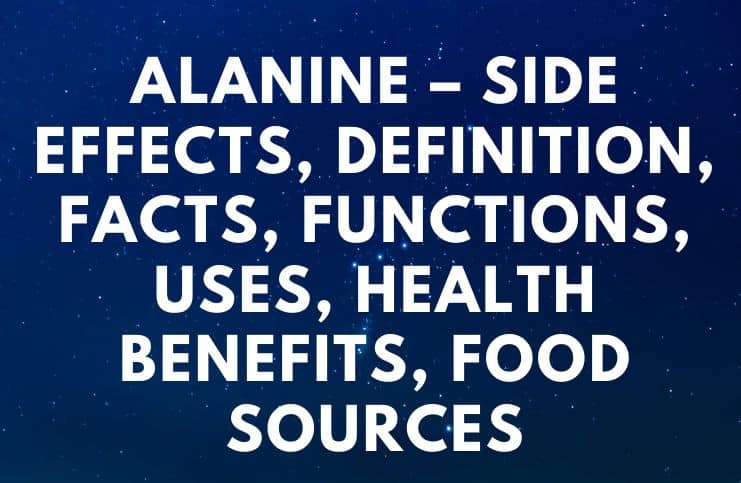Alanine – Side Effects, Definition, Facts, Functions, Uses, Health Benefits, Food Sources:
Facts
It is a nonessential amino acid (the body can synthesize it) and is one of the most common amino acids. For example, it is one of the most common amino acids in the body, accounting for about 8 percent of the core structure of many different proteins.
Even if this amino acid is a nonessential amino acid, it may become essential if, due to certain diseases, the body can not synthesize it. In this case, one should consume foods containing this amino acid or resort to supplements.
Gulewitsch, a Russian scientist, was the 1st to identify carnosine (a naturally occurring molecule ) in 1900. 11 years later, Gulewitsch would identify and discover its constituent amino acids, histidine, and beta-alanine.
Uses And Health Benefits
Improves mental function
It is an important source of energy for muscle tissue, the brain, and the central nervous system, and it boosts the immune system by producing antibodies.
Better mood and sleep
It is involved in the metabolism of tryptophan and vitamin B6, and it is the most widely used amino acid, representing about 9% of all protein structures.
Tryptophan is one of the amino acids that your physical body uses to make neurotransmitters such as melatonin and serotonin. In addition, melatonin and tryptophan are both effective dietary supplements used for improving and promoting a calm mind and sleep.
Boosts energy levels
This amino acid also participates in the glucose-alanine cycle (or Cahill cycle), which occurs between tissues and the liver, helping the body metabolize glucose and eliminate toxins.
Remedy for enlarged prostate
It is found in the prostate fluid, and therefore, it is believed to help treat benign prostatic hyperplasia, also known as enlarged prostate, which may lead to disorders, like – as difficulty in voiding, frequent urination, urinary tract infections, and urinary leakage.
Symptoms of this problem commonly develop around age 50. More importantly, by age 60, the majority of men have some degree of benign prostatic hyperplasia, and by age 85, 90 percent of men have a chance of having UTIs caused by benign prostatic hyperplasia.
Improve endurance
One form of this amino acid – beta-alanine – is becoming increasingly popular as a supplement before training or during training, for buffering lactic acid (removing muscle fatigue and burning sensations and reducing muscle catabolism).
Food Sources
Red kidney beans, chickpeas, white beans, mung beans, adzuki beans, lentils, beer yeast, dairy products, eggs, potatoes, sweet potatoes, carrots, eggplant, meat, hazelnuts, almonds, pecans, peanuts, flaxseeds, chia seeds, sunflower seeds, sesame seeds, watermelon seeds, pumpkin seeds, soy products, millet, oats, oat bran, wheat bran, wheat, brown rice, mangoes, papayas, pineapples, durian, apples, olives, kiwis, figs, avocado, and oranges.
Dosage
For a healthy adult, it is recommended a dose of three to 6 grams of this amino acid per day.
Side Effects of Alanine
Overconsumption of supplements containing this non-essential amino acid may cause flushing of the skin or mild burning.
Moreover, according to research, a high dose of this amino acid caused a paresthesia effect with symptoms ranging from numbness and blistering to redness. Another possible side effect is a decline in taurine levels. Taurine is an amino acid that is important for your brain and body.
READ THIS NEXT:
References https://www.ncbi.nlm.nih.gov/pmc/articles/PMC3374095/ https://www.ncbi.nlm.nih.gov/pmc/articles/PMC4501114/
